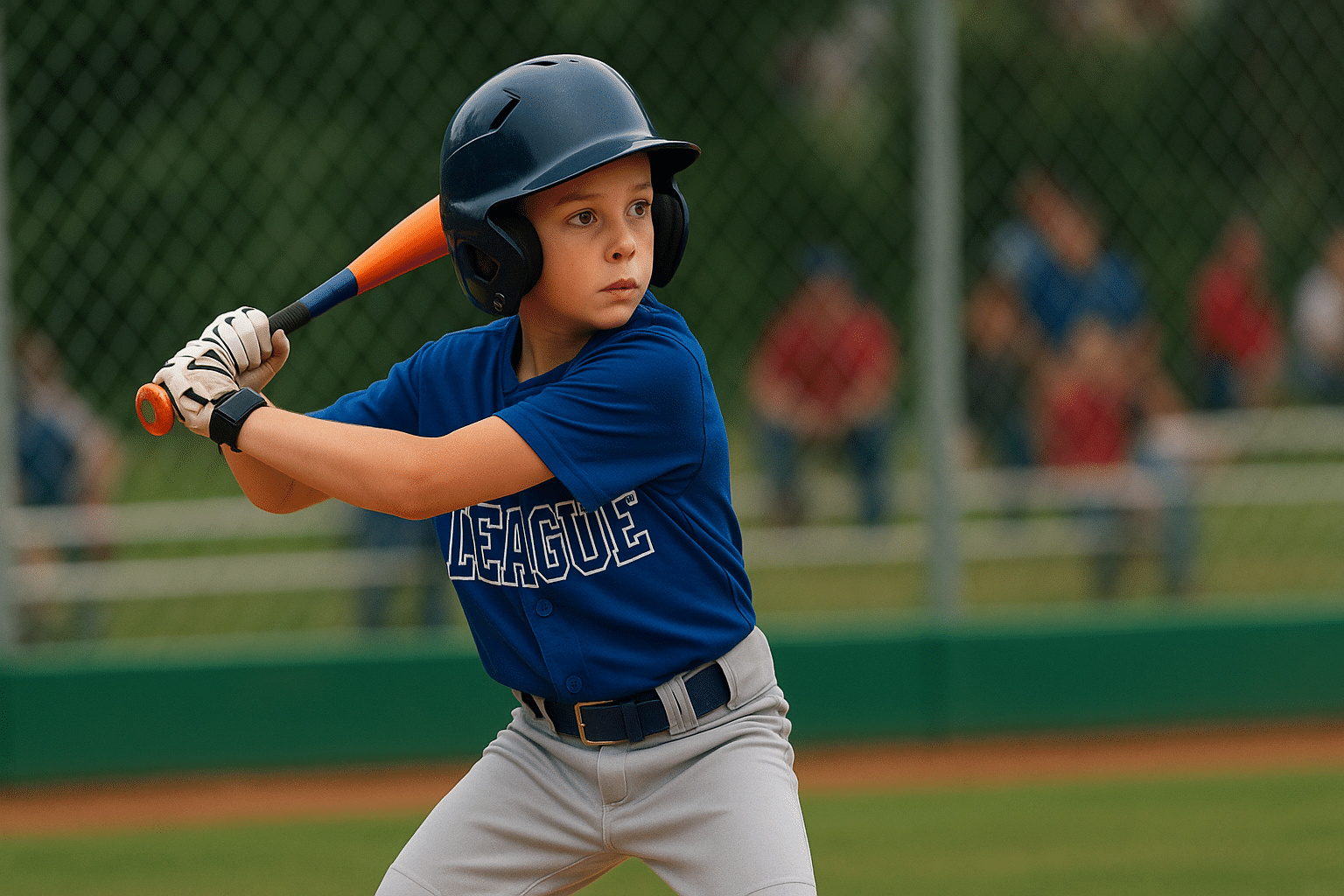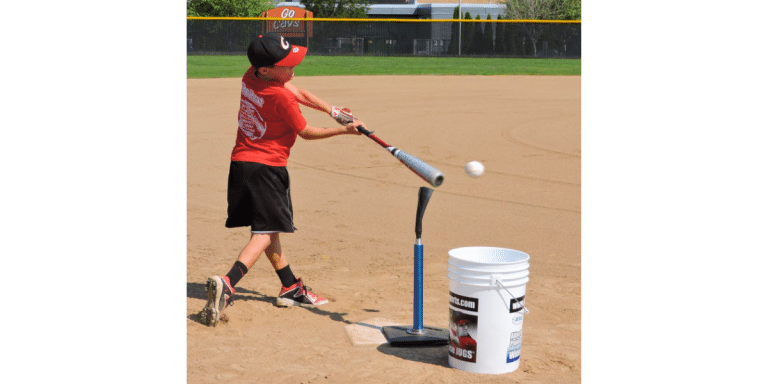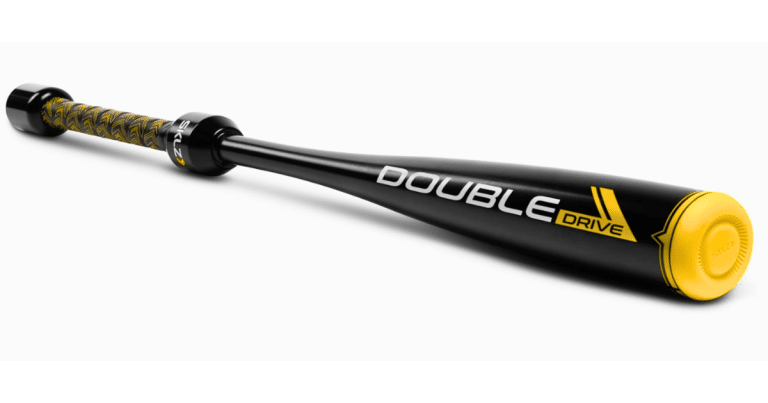What Is a Smart Bat—And Should Your Kid Use One?
Once upon a time, all a kid needed was a bat, a ball, and a patch of grass.
Today? You’ve got bats that track swing speed, apps that analyze attack angle, and gear promising to turn your Little Leaguer into a launch-angle machine.
Enter the smart bat—part training tool, part tech gadget, and totally changing how young hitters learn the game.
In this post, we break down exactly what a smart bat is, how it works, and who it’s right for.
This page contains affiliate links and I earn a commission if you make a purchase through one of the links, at no cost to you. As an Amazon Associate I earn from qualifying purchases.
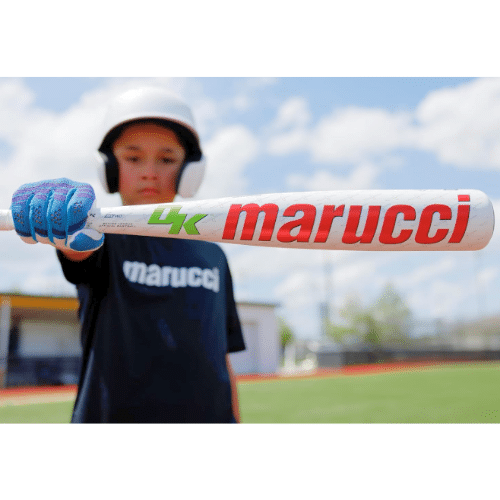
Not Your Average Bat
Forget what you know about old-school wood or alloy sticks.
A smart bat isn’t just a bat—it’s a training tool with brains.
Packed with embedded sensors or paired with external swing trackers, smart bats measure real-time swing metrics like bat speed, attack angle, and time to contact.
❓ So… What Is a Smart Bat?
At its core, a smart bat uses built-in technology (or a connected sensor) to track how your player swings.
That data—usually sent to a mobile app—shows key metrics like:
- Bat speed – How fast the bat is moving when it makes contact with the ball. More speed = more power.
- Swing path/attack angle – The angle of the bat as it moves through the hitting zone. Too steep? You might pop it up. Too flat? Ground balls all day.
- Time to contact – How long it takes from the start of the swing to when the bat hits the ball. Shorter time = quicker hands.
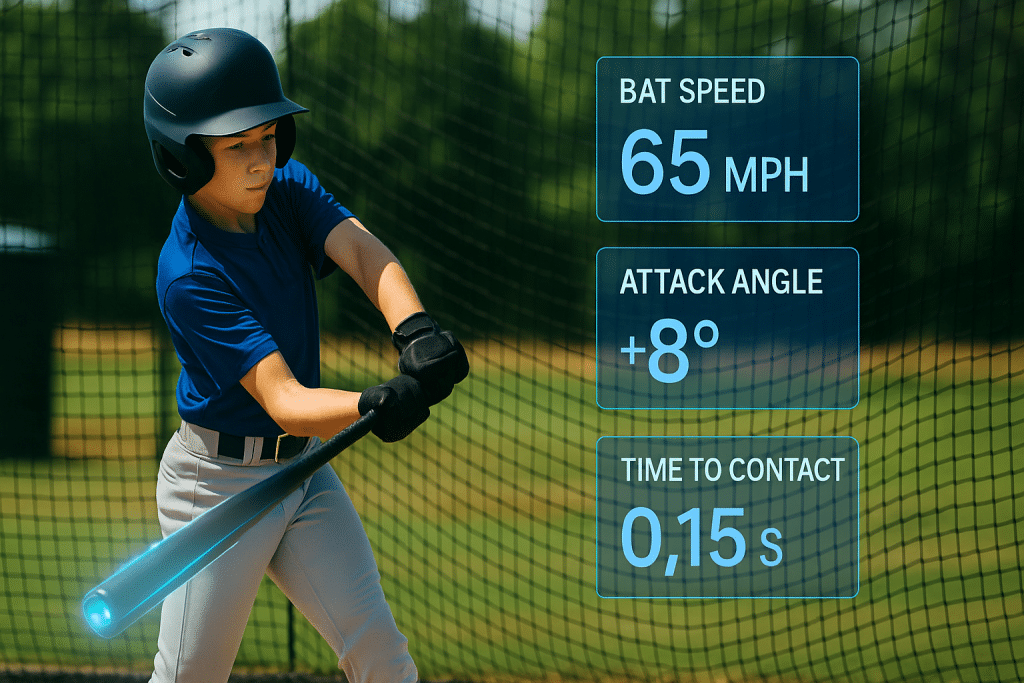
Some models, like the Blast Motion, attach sensors to any bat. Others, like the Marucci CATX Smart Bat, have sensors built in from the start.
🥇 What’s the Purpose?
It’s all about feedback. Smart bats show players how they’re swinging—not just how it feels. That helps coaches and parents identify issues like:
- A late bat
- Poor launch angle
- Inconsistent swing paths
And for kids? It turns hitting into a fun, data-driven game they can actually improve at.
🧠 How Can It Help Jr.?
Let’s say your kid keeps popping the ball up.
With a smart bat, you might see their attack angle is too steep.
Or maybe they’re swinging late against faster pitching. Now you have the why behind the result.
It’s also great for building consistency.
Kids can work toward measurable goals: better bat speed, tighter swing paths, quicker time to contact.
And for visual learners?
Apps give them instant graphs and videos to break things down.
🧣 Who’s It Right For?
Smart bats are perfect for:
- Little Leaguers who want to improve quickly
- High school players aiming to impress scouts
- Parents & coaches who want actionable feedback
But let’s be real: it’s not for everyone.
If your son is still learning how to make contact, stick with the fundamentals first.
Smart bats are best for players who already have some rhythm at the plate and want to improve.
📈 Top Smart Bats & Sensors (2025 Picks)
Most smart bats and sensors are designed for training only—meaning they can’t be used in games.
They’re designed for training—practices, batting cages, ands tee work. However, the Marucci CATX Smart Bat is a rare exception: it’s currently the only smart bat approved for use in official youth games.
Always check with your league’s bat rules before bringing one to the field.
Here are a few of the top performers in the market—backed by players, coaches, and affiliate partnerships:
1. Blast Motion Bat Sensor
The Blast Motion Bat Sensor stands out for its user-friendly setup, robust swing metrics, and seamless smartphone integration.
It delivers real-time feedback on key elements like bat speed, attack angle, and rotational acceleration, making it a valuable tool for both players and coaches looking to sharpen swing mechanics and track progress.
The sensor is lightweight and barely noticeable—especially when worn with batting gloves—and it charges wirelessly for added convenience.
The Blast app is intuitive, offering instant feedback and the ability to pair swing data with video, making analysis easy and visual.
Even better: Blast auto-calibrates, meaning there’s no technical setup—perfect for younger players or parents who don’t want a tech headache.
Bottom Line:
Blast Motion is one of the most accessible and well-supported swing analyzers on the market.
It’s especially useful for players who want actionable feedback without complicated setup—but should always be paired with smart coaching, not used as a solo guide.
Pros and Cons
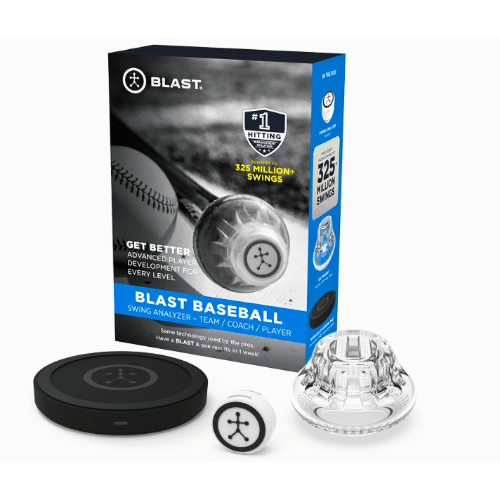
2. Diamond Kinetics SwingTracker
The Diamond Kinetics SwingTracker is a powerhouse for hitters and coaches who crave in-depth swing analysis.
It delivers an impressive range of metrics—including hand path, impact momentum, and 3D swing modeling—going beyond the basics offered by most competitors.
The app is cleanly designed and allows users to track performance over time, compare against national benchmarks, or even create leaderboards for teams.
Multiplayer support and group data sharing make it a great fit for high school programs or clinics.
Players also get access to DK Experts (with a subscription), which unlocks custom coaching tips, drills, and improvement plans tailored to their swing profile.
Wireless charging and both real-time and post-swing feedback round out a feature-rich training tool.
That said, SwingTracker isn’t for the tech-averse.
The depth of data can overwhelm beginners, and the app’s exclusive iOS compatibility limits who can use it.
Occasional Bluetooth hiccups and grainy in-app video quality can also frustrate users trying to sync video with their swings.
And while the base metrics are strong, unlocking the full power of the system requires a paid subscription.
Bottom Line:
SwingTracker is best suited for serious youth hitters, teams, or coaches who want a granular look at every aspect of a swing.
If you’re tech-comfortable and committed to long-term improvement, this sensor delivers some of the most advanced swing data available.
Pros and Cons
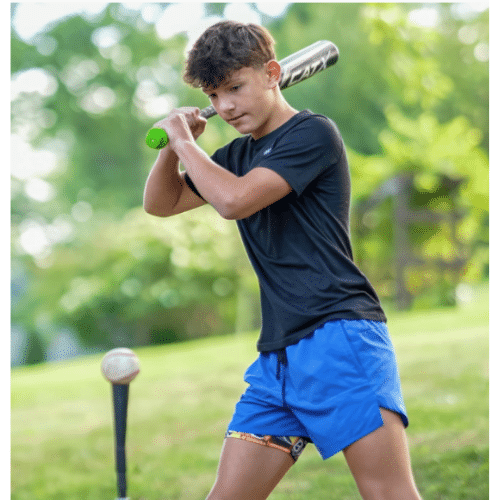
3. Marucci CATX Smart Bat
The Marucci CATX Smart Bat combines the power of a premium alloy bat with the precision of built-in tech, thanks to its embedded sensor.
Unlike external attachments, the sensor is sealed into the knob, requiring no charging or setup—just swing and sync.
It tracks 11 key metrics related to power, control, and bat speed, and pairs with the Diamond Kinetics app for real-time analysis and player development tools.
The Marucci CATX Smart Bat is a rare exception: it’s currently the only smart bat approved for use in many official youth baseball leagues.
Constructed from Marucci’s AZR alloy with a larger sweet spot, ring-free barrel, and custom handle taper, this bat delivers both feel and feedback in one sleek package.
That said, there are a few tradeoffs. The sensor alters the sound slightly compared to standard CATX models, which may throw off purists.
Also, full access to the app’s advanced features requires a subscription, and while the bat is competitively priced for its category, it may be more than some families want to spend—especially when it doesn’t include exit velocity without extra gear.
Pros and Cons

🤔 Should My Child Be Using a Smart Bat?
Only you (and your budget) can answer that. But here’s a quick checklist to consider:
- Is your player ready for more advanced training?
- Do they already have solid mechanics?
- Are they motivated by visual feedback or data?
- Are you looking for ways to track progress over time?
If you said yes to most of these, a smart bat could be a great investment.
But remember: this isn’t a replacement for coaching.
It’s a tool. Used right, it helps players train smarter and understand their swing.
Used wrong, it becomes just another toy gathering dust in the garage.
✅ Tips for Making It Work
- Start slow: Don’t overload them with data. Focus on 1–2 metrics first.
- Use video + data: Pair swing footage with the numbers for best results.
- Track progress weekly: Set small, measurable goals.
• • Share results with coaches: Let them use the data to guide drills.
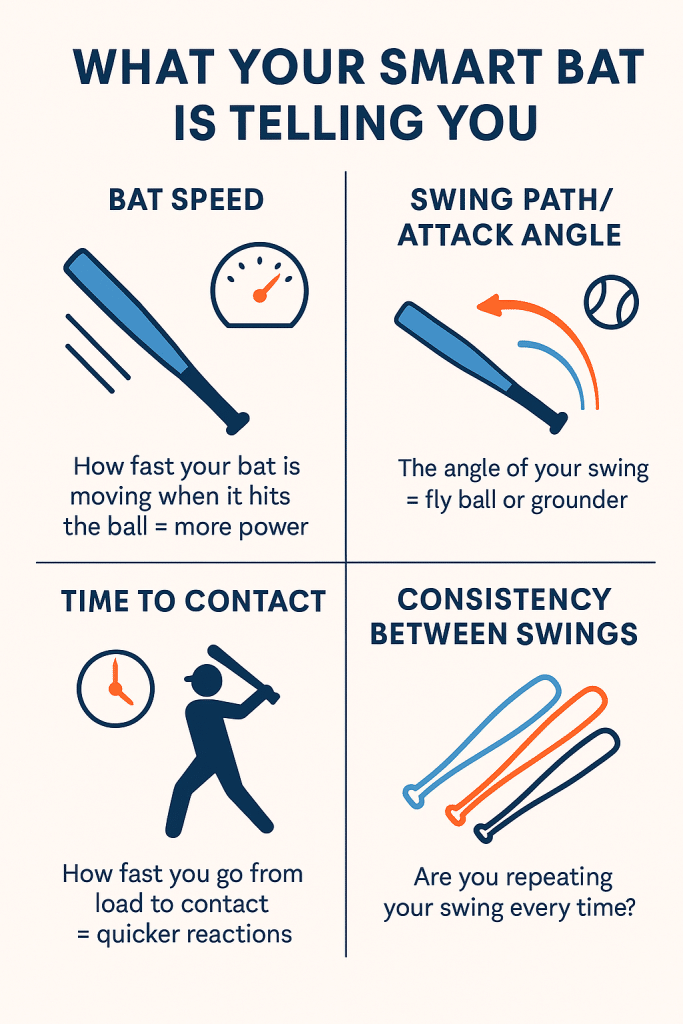
Frequently Asked Questions
Can my kid use a smart bat during a game?
Most smart bats are for training only. The Marucci CATX Smart Bat is the exception—it’s approved for USSSA games, but always check with your league first.
What if my child gets overwhelmed by the data?
Totally normal. Start simple. Focus on just one or two metrics (like bat speed and attack angle) and build from there.
Will this help my kid hit more home runs?
It’ll help them swing smarter. That means better contact, more consistency, and yes—eventually, more power if they keep putting in the reps.
Is a smart bat better than hitting lessons?
Smart bats don’t replace a coach. They’re a supplement—great for reinforcing what’s being taught and giving players feedback between lessons..
What’s the ideal age to start using one?
Ages 9–10 and up is a good sweet spot, especially if the player already has a consistent swing and is eager to improve.
What’s the difference between a built-in smart bat and a sensor add-on?
Built-in models (like the CATX) have tech embedded in the bat. Sensor-based options (like Blast Motion) attach to the knob and work with any bat.
🔍 Beyond the Basics: What the Data Can Teach You
Once your player starts swinging with a smart bat consistently, the real value isn’t just in the numbers—it’s in the patterns. And patterns are where breakthroughs happen.
You start asking better questions:
- Is bat speed improving week to week?
- Are attack angles getting more consistent?
- Is contact happening earlier in the swing?
This isn’t just data—it’s a window into how a hitter is developing.
For players chasing performance—more hard contact, fewer strikeouts, cleaner mechanics—this kind of feedback is a game-changer. It turns batting practice into something intentional.
Instead of “just getting swings in,” it becomes:
- “Let’s work on getting that attack angle up.”
- “Let’s shift your contact point earlier.”
- “Let’s aim for 2 mph more bat speed this month.”
That’s the difference between random reps—and reps with purpose.

🗣️ What Parents, Coaches, and Players Are Saying
⚙️ Intrigued by Tech:
Parents and coaches are excited about tools like the Marucci CATX2 Smart Bat, which combine performance with real-time feedback and even reduce hand sting.
📉 Pressure vs. Progress:
Some parents worry about kids getting too fixated on metrics—like bat speed and launch angle—at the expense of just enjoying the game.
✅ Big Upside for Motivated Players:
Still, for kids who want to improve and are already showing drive, smart bats offer insights that can fast-track development and sharpen focus.
📊 Right Age, Right Use:
Most recommend Smart Bats for players 10 and up, especially those with some swing consistency and an interest in self-guided progress.
💬 Final Thought
Smart bats are some of the most exciting tools in youth baseball today—but they’re only as powerful as the mindset behind them.
Used with purpose, they can sharpen swings, build confidence, and turn practice into something kids actually look forward to.
But they’re not a shortcut. They don’t replace hustle, good coaching, or love for the game.
So if your player’s ready—mentally and mechanically—a smart bat can be a great companion on the road to getting better.
Just remember: it’s not about chasing numbers. It’s about training with intention, learning with curiosity, and keeping baseball fun every step of the way.
